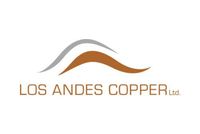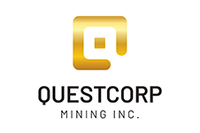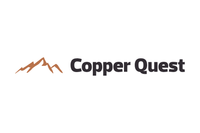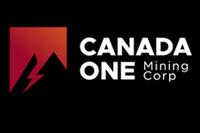
With its unique geological profile and friendly terrain, Chile’s Coastal Cordillera belt has long been an attractive target for both mining companies and investors.
The Coastal Cordillera belt in Chile has gained considerable interest among explorers because of its diverse geological profile, providing a distinct style of mineralisation compared to its parallel counterpart in the Chilean Andes.
Situated in one of the most copper-rich regions in the world, the belt contains vast deposits of copper, gold, silver, iron and other minerals. As a result, this region has become an excellent target for mining investment, with a favorable climate, terrain and regulatory environment. Recent promising discoveries in the region have further added to this interest, offering new opportunities for high-grade, near-surface copper exploration.
Unique geological profile
Chile's unique geological landscape is dominated by two prominent mountain ranges: the Coastal Cordillera belt and the Chilean Andes. These parallel formations offer a fascinating study in contrasts and similarities, each with its own distinct geological features and mineral compositions.
The Chilean Andes represents the most copper-rich province on Earth, with earlier reports showing estimated total resources of roughly 490 million metric tons, including mined material, across more than 63 porphyry copper deposits and multiple prospects. A 2022 data compilation on copper porphyry deposits in the Andes mountain found deposits in Chile's portion held an estimated 1.28 billion metric tons of contained copper, showing that the region's resource potential continues to be unearthed.
Formed between the early to late Cretaceous and Pliocene eras, copper porphyry deposits in this region occur in seven distinct metallogenic belts that span Chile, Peru and northwest Argentina. Six of these belts are situated within Chile.
This arrangement is not extraordinary in and of itself — mineral belts often occur in close proximity to one another. What makes the Chilean Cordillera belt distinct is how it was formed. The geological history of the Andes is incredibly complex, defined simultaneously by sedimentation, tectonic deformation and magmatism.
There is no evidence of terrane collision in this region, with most of the formations in the area tied to subduction. This resulted in the creation of a back-arc basin which eventually evolved into a continental arc. The initial formation of the Coastal Cordillera was subject to these same geologic forces.
However, the Coastal Cordillera also underwent several accretionary processes that caused the formation of a very different mineral profile. This likely played a significant role in the formation of the Cordillera's unusually rich gold and copper porphyry deposits, the presence of which has fascinated geologists for decades. Said deposits are much closer to the surface than those in the nearby Andes mountains, where many of the deposits are buried deep underground and require extensive mineral processing and removal methods.
“When the mining industry flooded up to the Andes to find these giant porphyry deposits, what they abandoned was the copper mining belt that started the Chilean mining industry — the Coastal Cordillera,” said Caitlin Jeffs, president and CEO of Ontario-based Red Metal Resources (CSE:RMES), and a professional geologist of more than 20 years.
Red Metal’s Carrizal property, which comprises the Farellon and Perth projects, is located in the Coastal Cordillera and runs adjacent to the historic Carrizal Alto mining complex.
Ideal mining landscape
The Coastal Cordillera belt has several distinct advantages over other mining regions within these mountains, which together make it an incredibly promising target for mining, exploration and investment.
Terrain and climate
The Coastal Cordillera belt's low altitude means minerals in the region are generally far easier to access than those in the Andes Mountains. Altitude sickness is far less of a concern at mining sites along the coast, and it's far less logistically complex to deploy and operate heavy machinery. Workers in the region also do not require high-altitude training or equipment modifications.
“Being in low elevation means projects don’t have to deal with the complexities of having to set up a camp. Having people work at high elevations of 5,000 meters, for example, can be very expensive,” Jeffs said.
The Coastal Cordillera region's terrain also contributes to its milder climate. While the mountains are known for their extreme temperatures and harsh weather conditions, the coastal region is generally mild and dry, with lesser snow and rainfall levels. This minimizes the need for winterised equipment while also reducing both operating and energy costs. The Coastal Cordillera is also ideal for year round exploration, as opposed to the high Andes where the exploration window is limited to just a few months of the summer season every year.
Factoring in the fact that the minerals in the Coastal Cordillera all tend to be close to the surface, provides a clearer picture of why the region's geology is regarded so favorably.
Existing infrastructure
The presence of vital infrastructure in the region also means reduced capital costs when establishing new mining projects. Moreover, because the area contains multiple major ports, cities and roads, it's far easier to hire staff, locate equipment, source raw materials and export produced minerals. In comparison, the Andes mountains are significantly more remote and require more complex logistics and higher transportation costs.
Regulatory environment
Chile's mining industry has a long history and plays a crucial role in the country's economy. The Chilean government has created an environment that ensures an attractive mining regime, from both a sociopolitical and economic perspective, with policies and regulations that promote mining and resource extraction.
In addition, Chile's labor force in the resource sector is highly qualified, with access to some of the latest and most sophisticated mining technologies in the world.
Notable projects
It’s no surprise that the Coastal Cordillera has emerged as one of the most prolific regions in Chile for copper exploration.
Red Metal Resources’ Farellon and Perth projects are highly prospective for both copper and gold, with silver and cobalt credits. “These deposits obviously aren't as big — we know that — but the benefit is they're higher grades, traditionally. So we are getting anywhere from 1 percent to 2 percent copper,” said Jeffs. This also means that the deposits can be outlined in a much shorter time frame, at a lower cost, and then developed to take advantage of today’s copper market.
The company also stands to benefit from its small footprint, as Chile’s mining regime has provided unique benefits and support for artisanal, small-scale mining operations.
There have been several significant copper activities within the belt in recent years, all of which further contribute to the region's investment attractiveness.
Culpeo Minerals (ASX:CPO,OTCQB:CPORF), for instance, maintains a portfolio of several high-grade copper assets in the region, including the Lana Corina project. Situated near Chile's Coquimbo region, the project is defined by near-surface breccia with high-grade copper mineralisation and walk-up drilling targets.
Canadian exploration company Torq Resources (TSXV:TORQ,OTCQB:TRBMF) has also established a significant presence in Chile's Coastal Cordillera region, focusing on copper and gold exploration. Their work in the region is spearheaded by its Margarita project, known for its potential to host substantial copper and gold resources.
Takeaway
The Coastal Cordillera belt in Chile continues to be a focal point for copper exploration, contributing to the ongoing narrative of Chile's rich mining heritage, while potentially uncovering new resources crucial for the global copper supply. Investors and industry watchers should keep a close eye on developments in this region, as successful exploration could lead to significant opportunities in the copper sector.
This INNSpired article is sponsored by Red Metal Resources (CSE:RMES). This INNSpired article provides information which was sourced by the Investing News Network (INN) and approved by Red Metal Resources in order to help investors learn more about the company. Red Metal Resources is a client of INN. The company’s campaign fees pay for INN to create and update this INNSpired article.
This INNSpired article was written according to INN editorial standards to educate investors.
INN does not provide investment advice and the information on this profile should not be considered a recommendation to buy or sell any security. INN does not endorse or recommend the business, products, services or securities of any company profiled.
The information contained here is for information purposes only and is not to be construed as an offer or solicitation for the sale or purchase of securities. Readers should conduct their own research for all information publicly available concerning the company. Prior to making any investment decision, it is recommended that readers consult directly with Red Metal Resources and seek advice from a qualified investment advisor.






